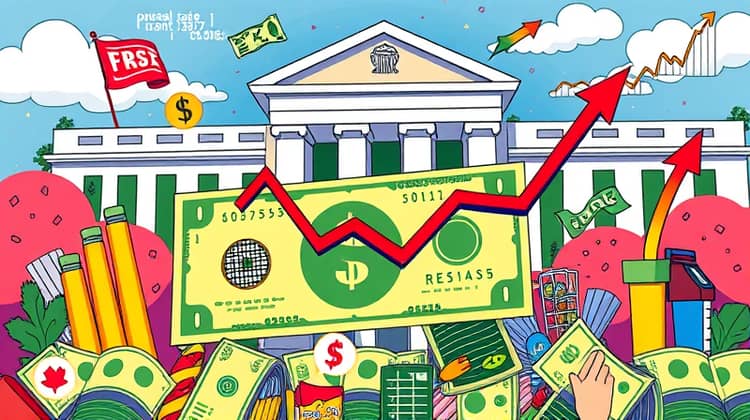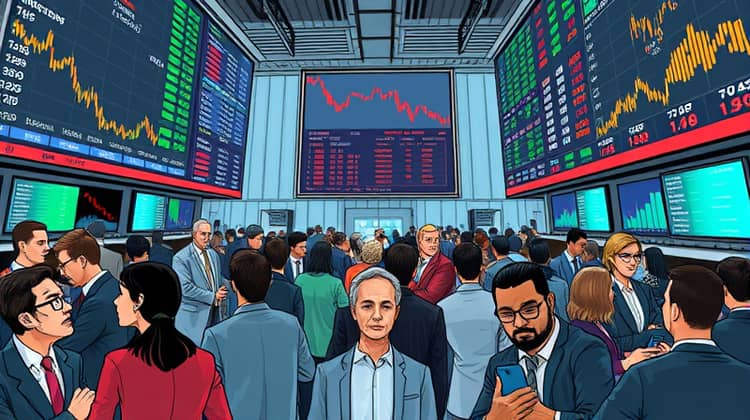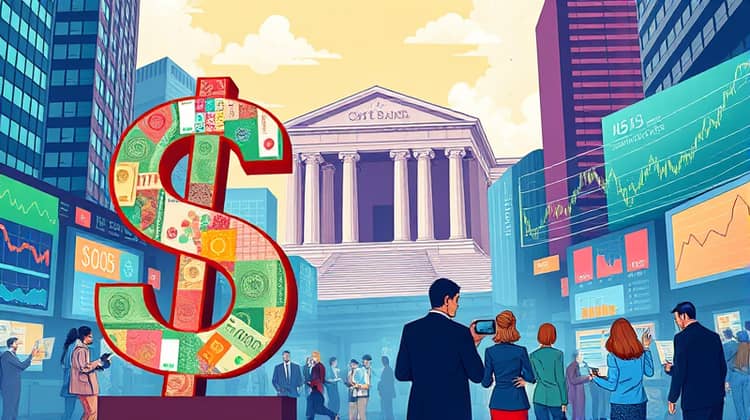Inflation is a persistent increase in the prices of goods and services over time, which can have profound effects on economies and individual purchasing power. As inflation rises, it diminishes the value of money, leading consumers to spend more on the same goods or services than they did previously. Understanding how inflation operates is crucial for both everyday individuals and investors who must adapt their strategies accordingly.
In addition to impacting consumer behavior, inflation can significantly shape financial markets, especially in terms of currencies and equity investments. The value of the dollar, for instance, can fluctuate in response to inflation rates, prompting changes in trading strategies and investment choices.
Equity markets, on the other hand, are often viewed through the lens of inflation expectations; rising prices can lead to uncertainty and volatility. This article aims to explore the dynamics of inflation in relation to the dollar, equity markets, types of inflation, and monetary policy responses.
Understanding Inflation

Inflation is not just a simple number; it represents the changing value of money in an economy. When inflation occurs, the purchasing power of currency is eroded, meaning consumers and businesses find themselves needing more dollars to purchase the same goods and services they bought in the past. It can arise from various economic activities and circumstances, influencing everything from consumer spending to investment strategies.
Understanding the causes of inflation is essential to grasping its effects on markets. Economists typically categorize inflation into different types to best explain its roots: demand-pull, cost-push, and built-in inflation. Each type has unique characteristics and implications for the economy and financial markets.
Inflation impacts various facets of the economy, directly affecting the Federal Reserve's monetary policy direction and causing fluctuations in bond yields and stock prices. As a result, both individual investors and institutional players must keep a close watch on inflation trends to inform their decision-making processes.
Inflation and the Dollar

Inflation can significantly influence the value of the United States dollar (USD) in international currency markets. As inflation rises, the purchasing power of the dollar declines, often resulting in investors seeking to protect their capital by moving to safer assets or foreign currencies. To combat inflation, the Federal Reserve may adjust interest rates, which further affects the dollar's value on the global stage.
- Rising inflation typically leads to higher interest rates as the Federal Reserve attempts to stabilize prices.
- A weaker dollar can lead to higher costs for imported goods and services, impacting consumers.
- Inflation expectations can cause volatility in the forex market as traders anticipate central bank actions.
In summary, understanding the relationship between inflation and the dollar is essential for anyone navigating the financial landscape. The impacts of inflation are far-reaching, influencing everything from exchange rates to investment strategies.
Equity Markets and Inflation

Inflation plays a critical role in shaping equity market performance. Higher inflation can lead to uncertainty, deterring investment and causing stock prices to fluctuate as companies navigate the changing price landscape.
- Inflation can squeeze corporate profit margins, leading to lower earnings expectations.
- Rising prices can result in increased wage demands from workers, potentially impacting company costs.
- Certain sectors, such as utilities and consumer staples, may perform better in high-inflation environments.
- Investors often shift to inflation-hedged assets, like commodities or real estate, during inflationary periods.
Overall, equity markets remain sensitive to inflation fluctuations, as the effects can ripple through into corporate profitability, investor sentiment, and market valuations, underscoring the importance of monitoring inflation trends.
Types of Inflation and Their Impact

Understanding the different types of inflation is vital for comprehending its potential economic consequences. There are three primary categories of inflation: demand-pull, cost-push, and built-in inflation, each contributing differently to the overall economic environment.
1. Demand-Pull Inflation
Demand-pull inflation occurs when demand for goods and services exceeds their supply, causing prices to rise. In a growing economy where consumer confidence and spending are high, this type of inflation can be relatively common as businesses struggle to keep pace with consumer demand.
For instance, when a country is experiencing economic growth, job creation may lead to increased disposable income, prompting consumers to spend more. This surge in demand forces companies to raise their prices in response to the overwhelming demand that exceeds their current inventory or service capabilities.
2. Cost-Push Inflation
Cost-push inflation, on the other hand, arises when production costs increase, leading to higher prices for end consumers. Factors contributing to cost-push inflation include rising raw material prices, wage increases, and supply chain disruptions.
When businesses face higher costs, they often pass those additional expenses onto consumers in the form of increased prices, thereby contributing to inflation. For example, a significant rise in oil prices can lead to higher transportation costs, affecting a wide range of other goods and services across the economy.
3. Built-In Inflation
Built-in inflation takes place when businesses and workers expect future inflation, leading to a self-sustaining cycle. As prices rise, workers demand higher wages to maintain their purchasing power, resulting in increased production costs that businesses then pass onto consumers.
This cycle can become problematic as it perpetuates inflationary pressures even when the economy does not experience substantial changes in demand or supply conditions. Thus, built-in inflation can create a persistent inflation rate that can be difficult to control without decisive policy interventions.
Monetary Policy Responses

Monetary policy responses to inflation are crucial for stabilizing the economy and mitigating the adverse effects of rising prices. Central banks, particularly the Federal Reserve in the U.S., play a key role in determining the appropriate actions to take in response to inflationary pressures.
- Raising interest rates to cool down an overheated economy.
- Implementing measures to increase money supply and stimulate growth during low inflation.
- Enhancing communication to shape inflation expectations among consumers and businesses.
Through diligent and timely monetary policy responses, central banks can help sustain economic growth while managing inflation levels, ensuring long-term stability in the financial landscape.
Conclusion

Inflation remains a critical element affecting the value of the dollar and equity markets, shaping economic conditions and financial strategies. A clear understanding of inflation types and their impacts enables businesses and investors to navigate economic fluctuations more effectively.
While inflation can pose challenges, it also creates opportunities for re-evaluating financial portfolios and investment strategies that align with changing economic conditions. Keeping an eye on inflation trends, central bank responses, and equity performance helps in making informed decisions in uncertain times.
By comprehensively understanding inflation and its effects, individuals can better prepare for its repercussions, ensuring they can foster resilience in their financial decisions and remain informed consumers as well.










